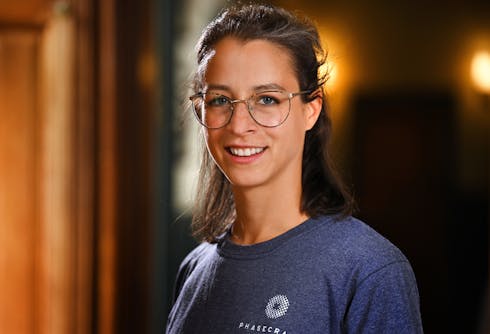Stasja's view on our recent work - Observing ground-state properties of the Fermi-Hubbard model using a scalable algorithm on a quantum computer

Today researchers from Phasecraft, the University of Bristol, and Google Quantum AI published the results of an experiment in Nature Communications. The article, “Observing ground-state properties of the Fermi-Hubbard model using a scalable algorithm on a quantum computer,” describes how Phasecraft has taken an important first step towards using quantum computers to determine low-energy properties of strongly-correlated electronic systems that cannot be exactly solved by classical computers. You can read more about that in our official press release.
I wanted to take the opportunity to say a bit more about the Fermi-Hubbard model, especially in the context of this particular experiment. The Fermi-Hubbard model has been essential for researchers like myself who are tackling complex problems in the world of material science.
While, at a glance, the Fermi-Hubbard model seems simple enough, it shows plenty of interesting physical properties, has no general analytical solution, and is notoriously difficult to solve numerically. There are classical techniques which allow for approximate simulation of some of these properties, but they are typically limited in accuracy or restricted to certain regimes.
One possible approach to solving the Fermi-Hubbard model is through a variational quantum eigensolver (VQE), which is a type of quantum-classical hybrid algorithm. VQE allows us to run classically inefficient calculations – such as many-body interactions – on the quantum device while running other computational challenges on the classical device.
In the work described in the Nature Communications paper, we used a chip provided by Google Quantum AI to run the largest experimental demonstration to date of VQE solving for the lowest energy state of 1D and 2D in the Fermi-Hubbard model. To achieve this we used highly optimized circuits which serve as to estimate the structure of the desired state, custom developed error-mitigation strategies, and a novel classical-optimization algorithm.
The data we received from the algorithm allowed us to observe some of the most interesting physical properties of the Fermi-Hubbard model, which are relevant to the development of novel, new materials. This is very exciting as we have shown that finding these key, practical properties of the Fermi-Hubbard model is not only scalable but possible with today’s near-term quantum devices.

